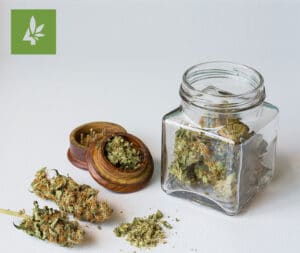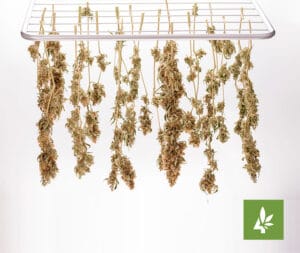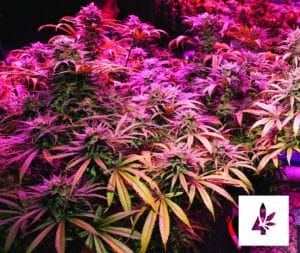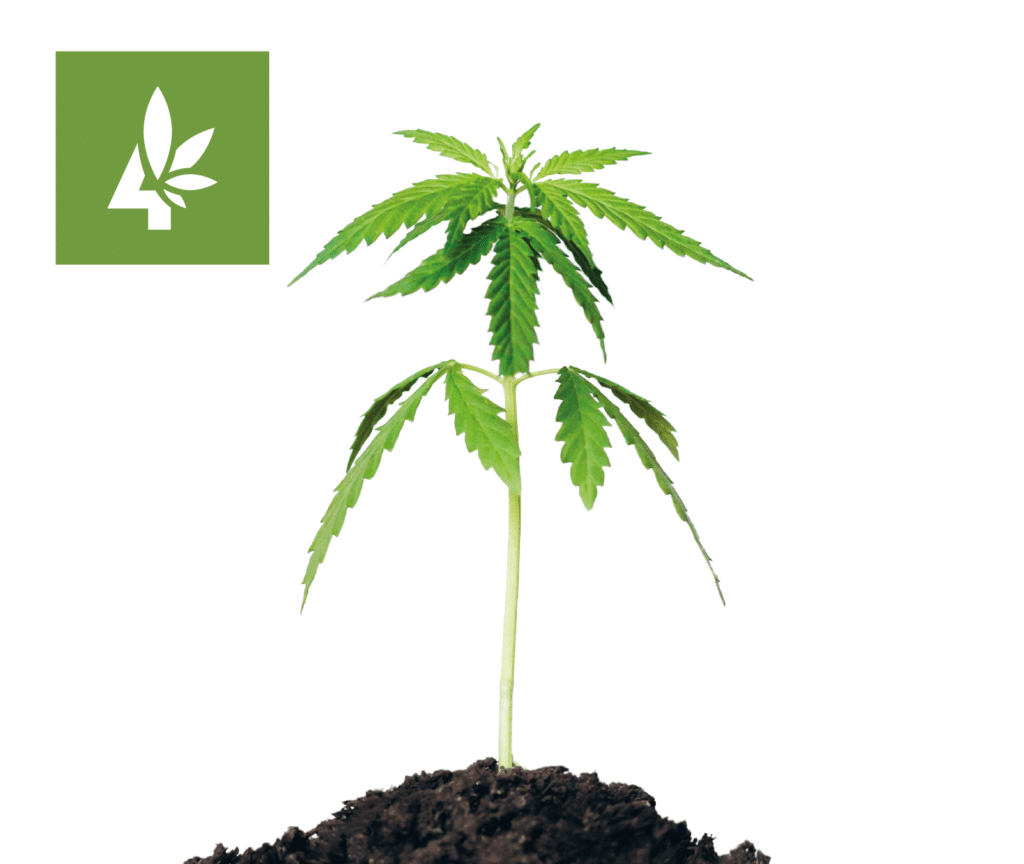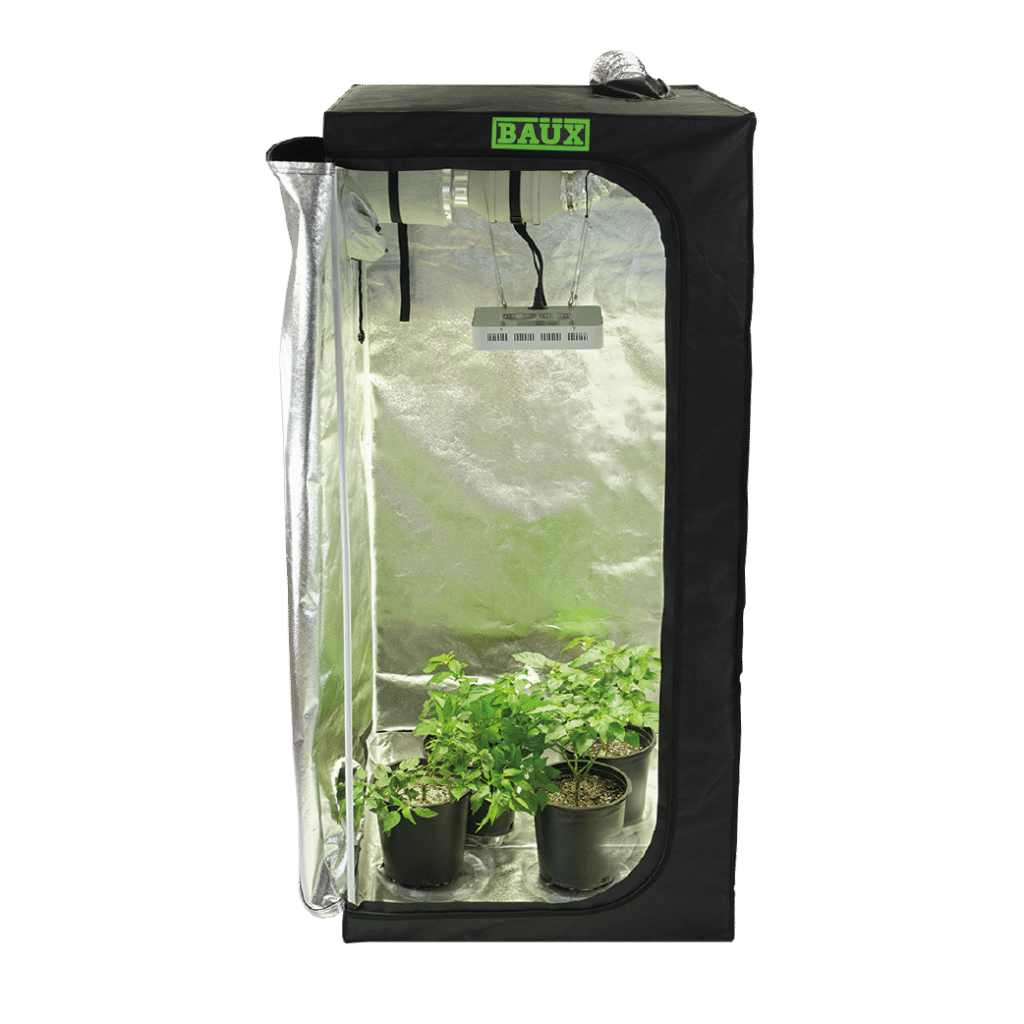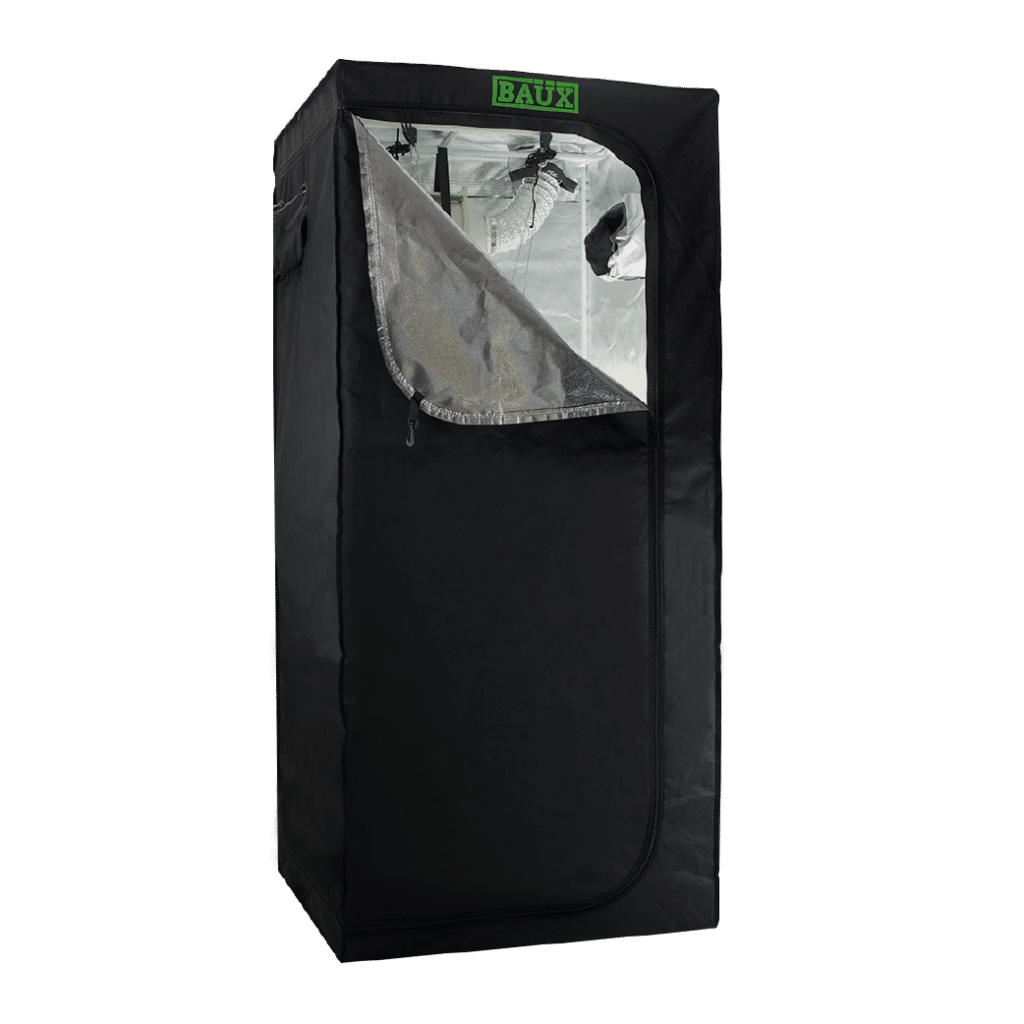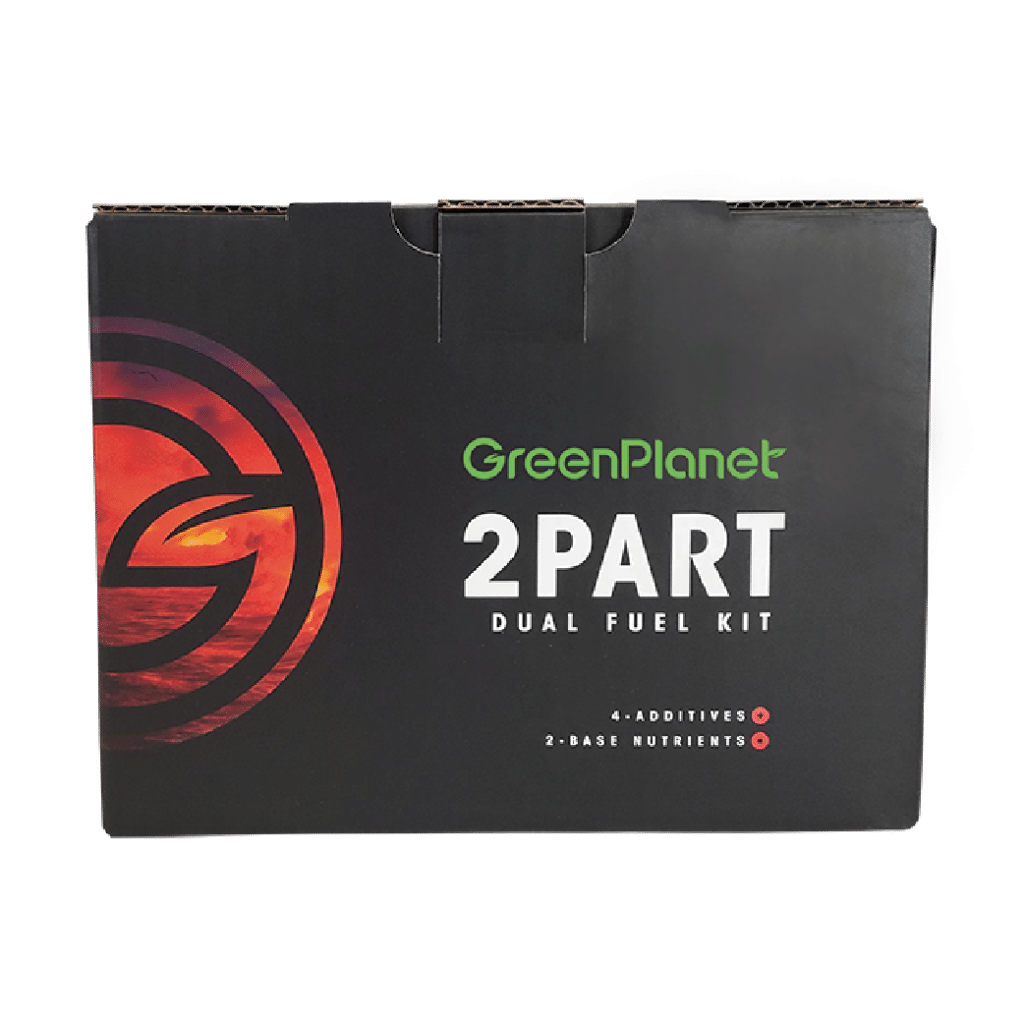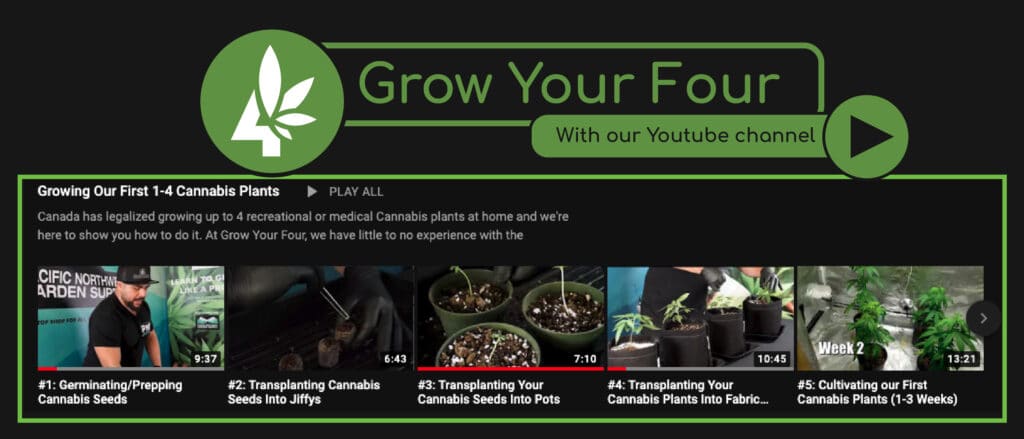If you’ve succeeded in growing seedlings into established plants, it’s time to move your cannabis plants into larger containers in the vegetative stage. This growing process aims to promote plant health, size, and stability before transitioning your cannabis plants into the flowering stage. Let’s look at some of the most important parameters to put in place to ensure fast, efficient growth during the vegetative stage.
Step #1: Determine If Your Cannabis Plants Are Ready to Enter the Vegetative Stage
How do you know if your plants are ready to enter the vegetative stage? If you’ve imported genetics as clones or fully established plants, they will likely be ready to continue growing as vegetative plants. However, if you’ve started from seed, examine your plants to make sure they will perform during the vegetative stage. For the best results, pre-vegetative plants moving to this phase of growth should:
- Be a minimum of 6”-10” inches tall.
- Have at least 4 stem intervals called “nodes”.
- Have multiple sets of fan leaves.
- Require several irrigations a week.
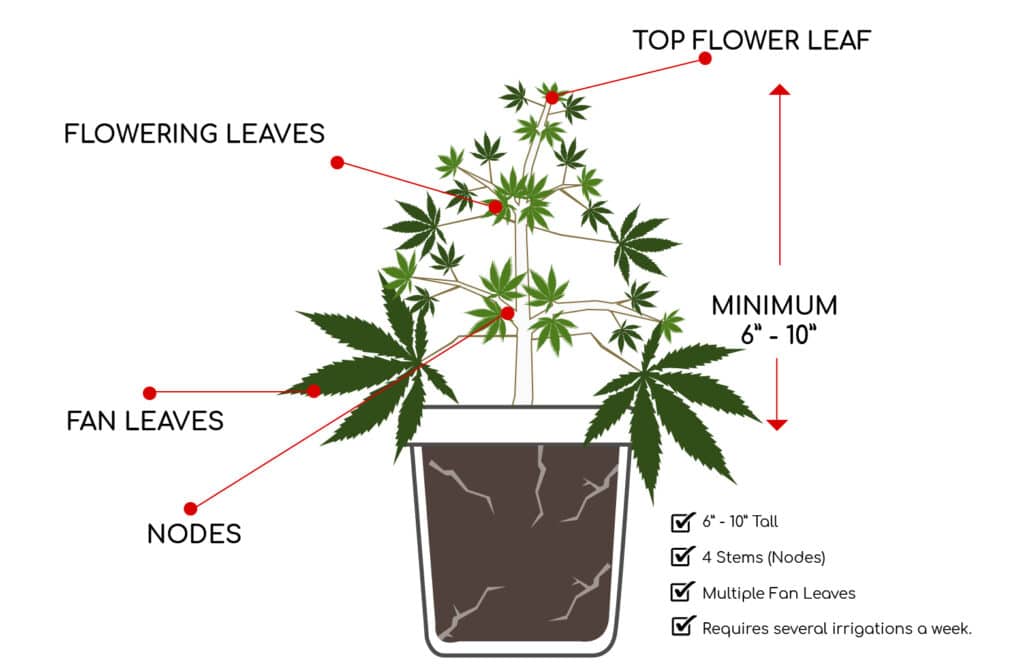
If your young plants exhibit most or all of these characteristics, it’s time to transition them into the vegetative stage in bigger containers where they will become larger, more established cannabis plants.
Step #2: Transplant Plants into Larger Containers
Your plants will not make it to their harvest date in small containers. So, consider transplanting them into larger pots before transitioning to the vegetative stage. Transplanting plants can be stressful. Not only for new growers but also for young plants that are turned upside down and pulled from their containers. So, it’s a good idea to get this potentially stressful process out of the way in the vegetative stage. Afterward, plants can focus all their energy on root, vertical and horizontal branch production.
Select an Appropriate Container
The final transplant isn’t as simple as choosing a large container and filling it with soil – some serious thought must go into selecting your plant’s final home. However, some choices in container size do have simple outcomes. For example, the larger the container you choose, the larger your plant will grow. So, if you want a tree-sized plant, you’ll need both a large container and growing space to support the growth of your crop in the weeks to come. Here are some things to consider when selecting an appropriate container size for your plants:
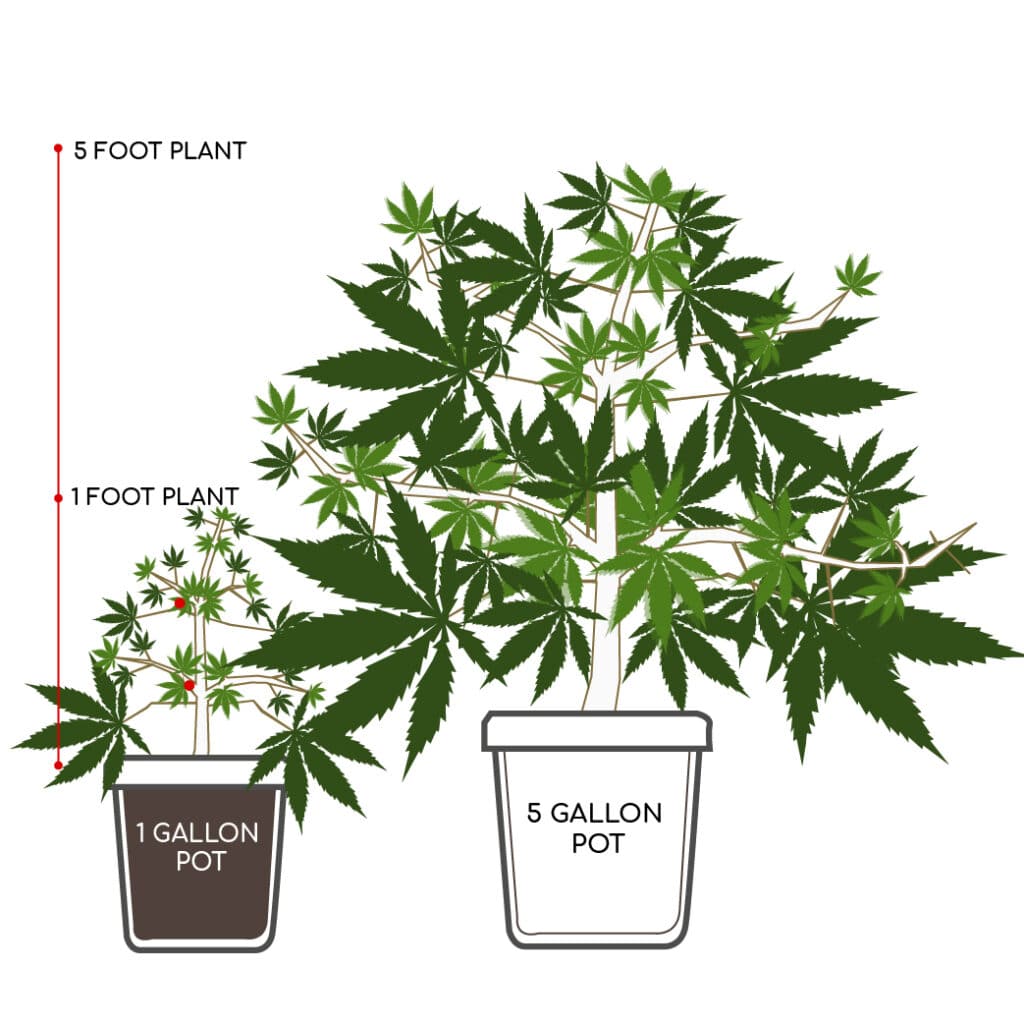
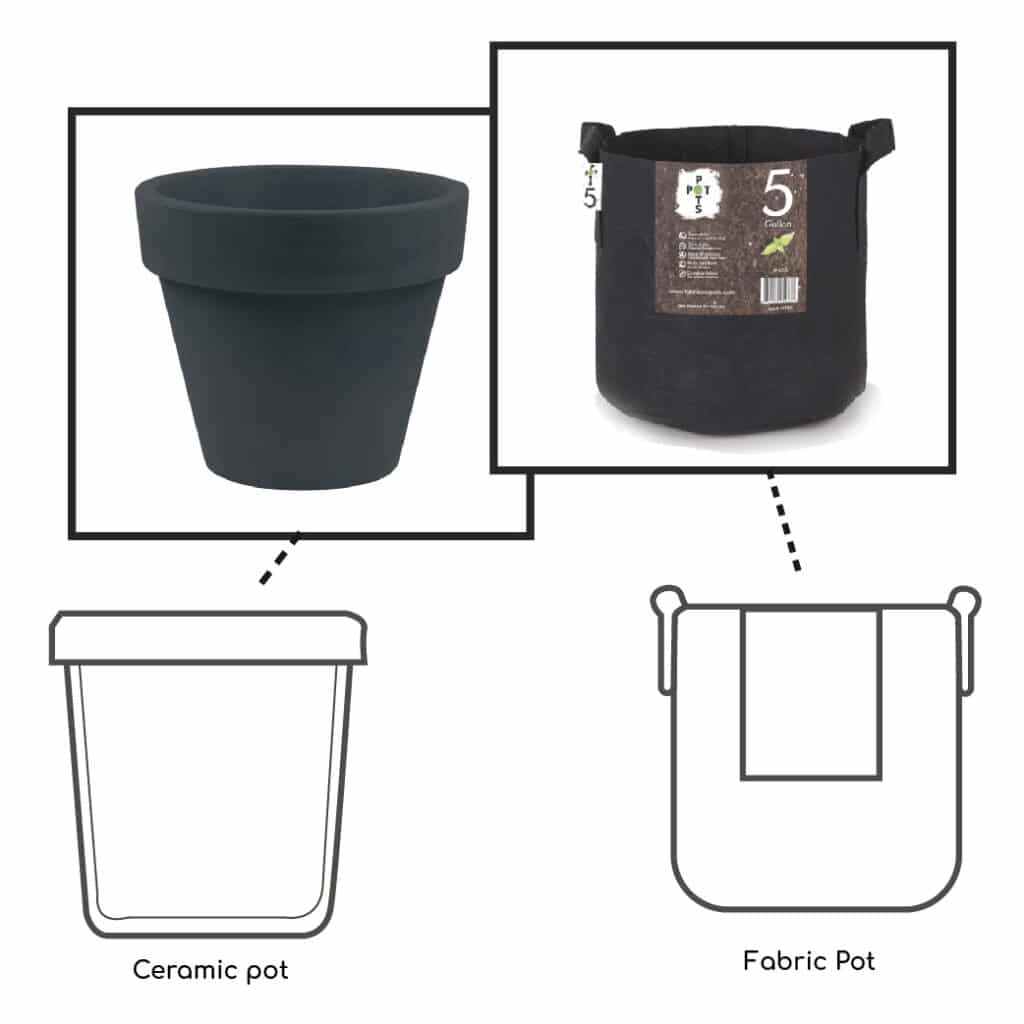
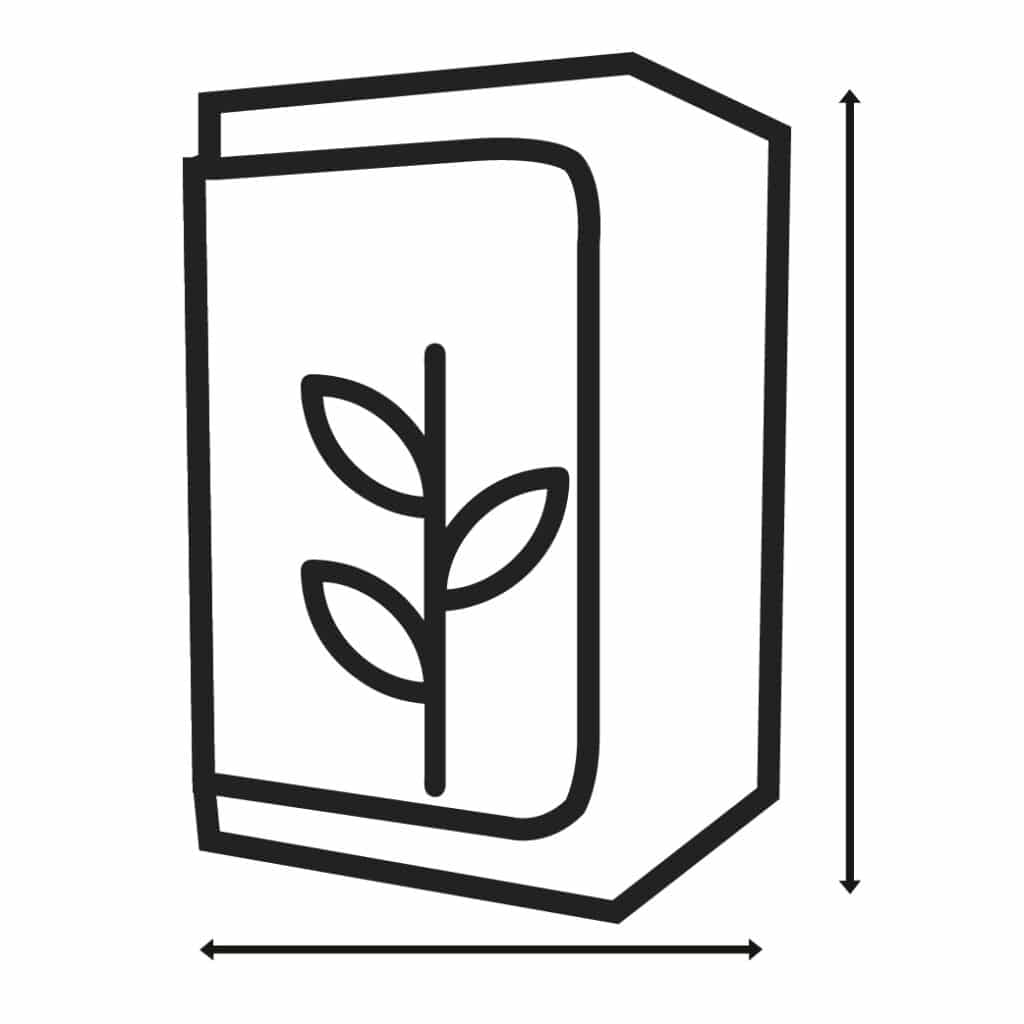
Container size
Container Size = Plant Size

Expect at least one foot of vertical growth for every gallon of medium. E.g. A 5-gallon container will yield a 5-foot tall plant.
Container Type
Some fabric and/or ceramic pots will yield faster root development. Considering investing in high-quality containers for this final transplant.
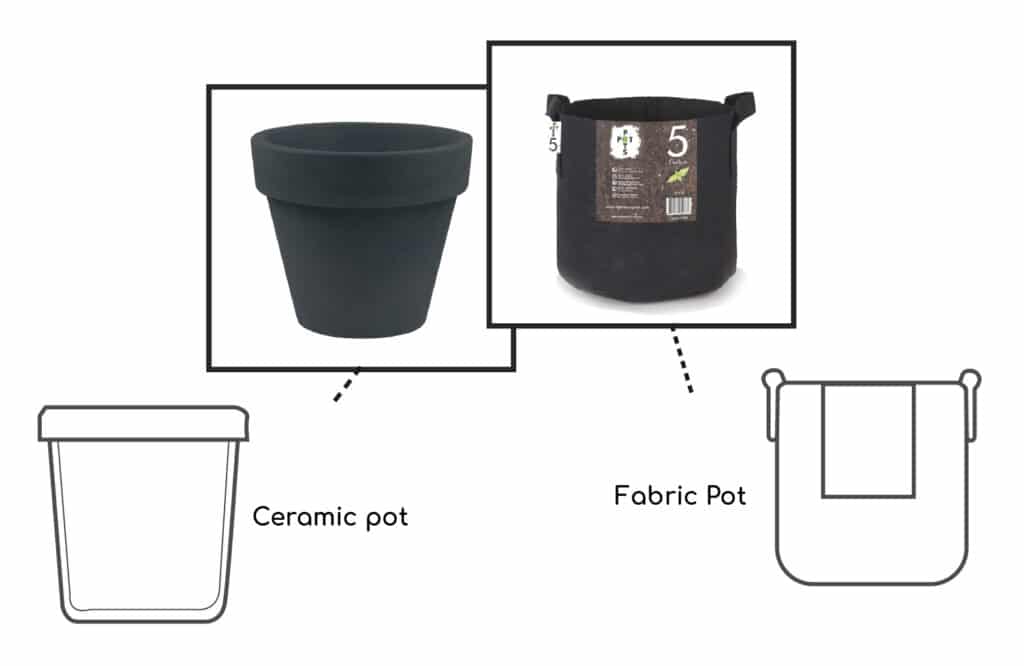
Growing Space for the Container
Growing Space: Before transplanting your crop into large containers, make sure your dedicated growing space will be able to support your fully grown plants. For example, if you have a 5 x 5 grow tent, 10-gallon containers may fit into this space in the beginning, but as your plants grow taller and wider, the growing space will become very crowded. In short, choose appropriate containers and conform your plant’s final size to your growing space.
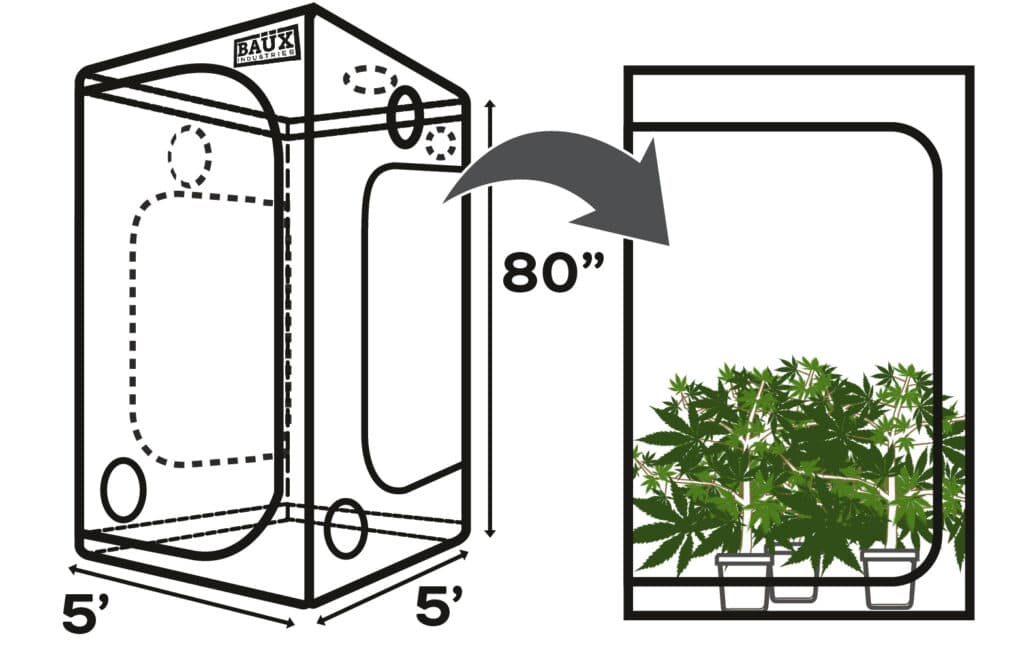
Check out some great Grow Tent set ups below:
Step #3: Environmental and Cannabis Nutrient Requirements
As your plant’s progress, they will require more intense light and stronger, more frequent fertilization. Unfortunately, the parameters you’ve set up for germinating seeds will not be useful in the following vegetative and flowering stages. So, it’s quite likely you’ll need to change/upgrade your indoor gardening equipment based on the desired outcome of your crop. Here is a brief list of essential equipment:


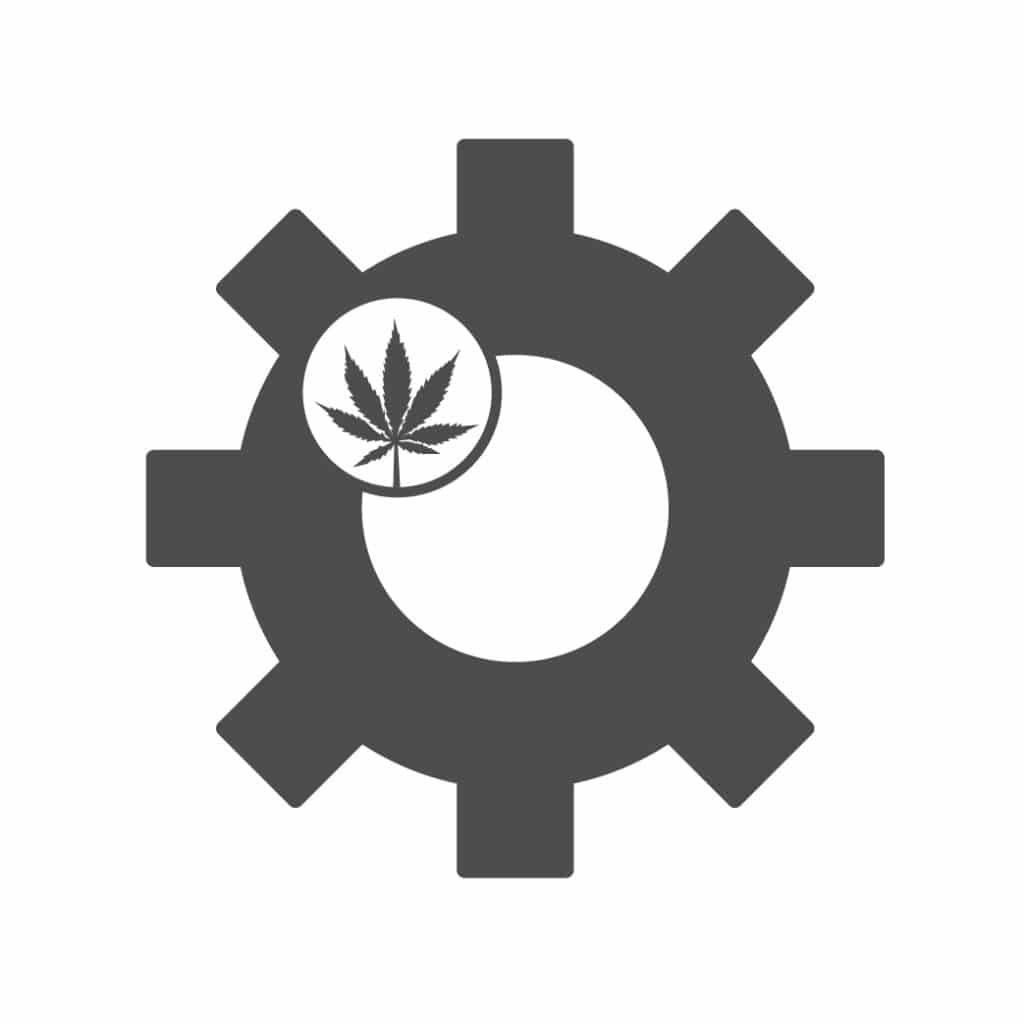
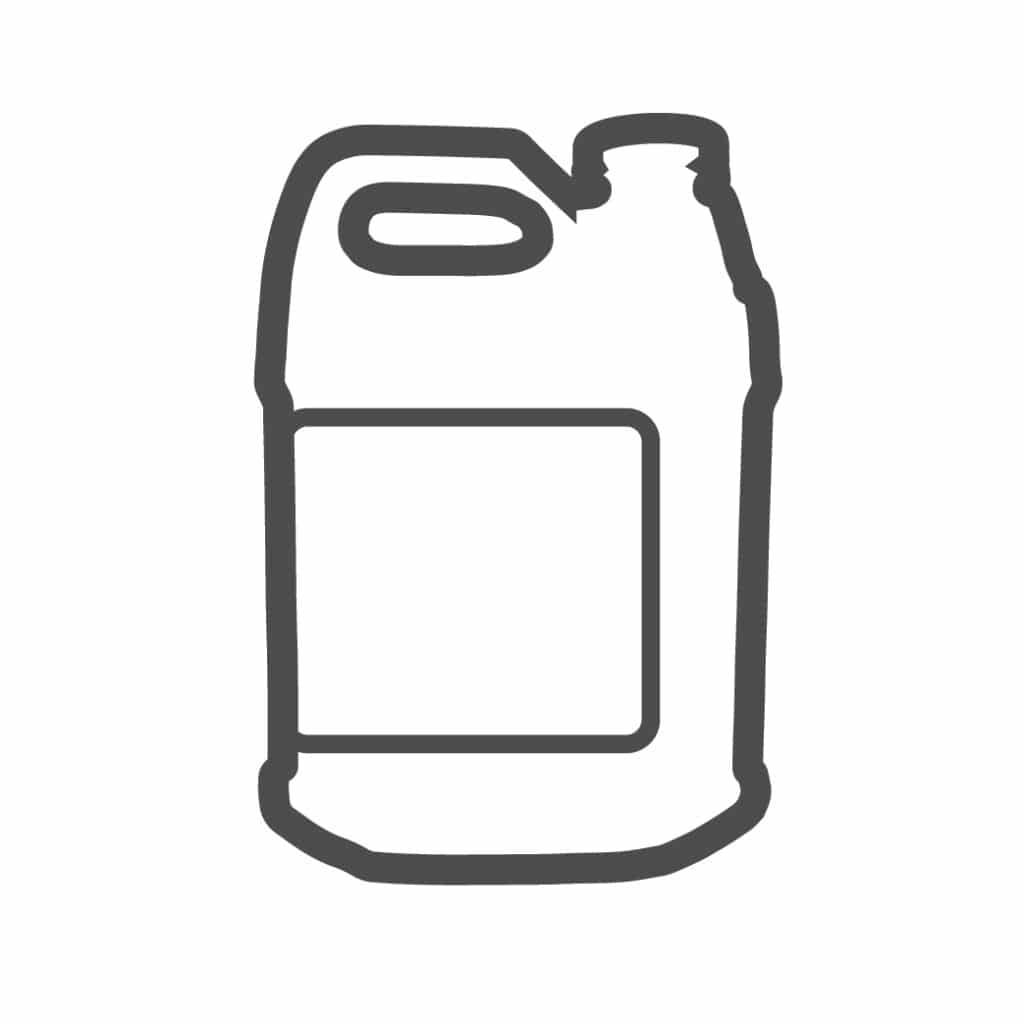

High-Wattage Grow Light(s)
Horticultural specific LEDs or High-Intensity Discharge (HID) lamps like Ceramic Metal Halides (CMH), High-Pressure Sodiums (HPS), and Metal Halides (MH) are typically recommended for these stages. CMH, MH, or full-spectrum LEDs are arguably the most beneficial for plants during the vegetative stage. Because of the spectrum these lamps possess, plants in the vegetative stage will have healthy, strong, and more steady periods of growth. Set your high-wattage grow lamp(s) on a photoperiod of 18 hours of light and 6 hours of darkness for the best results during the vegetative stage.
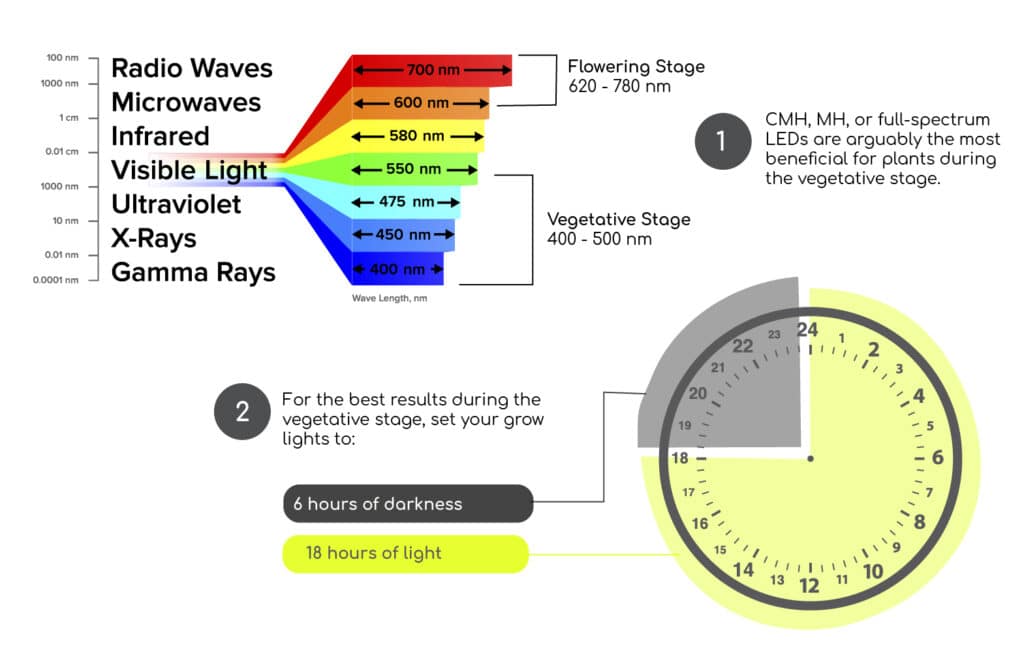

Ventilation Equipment
There are typically three reasons to exhaust or intake fresh air into the garden. The first, and arguably the most important, is to manage the heat-load produced by lighting. The second being the movement of fresh air and Co2 in and out of the garden; the third, but not least important, is to manage the odor produced by flowering plants. Ideally, plants in the vegetative stage should be kept in daytime temperatures of approximately 75-85 degrees Fahrenheit (24-29C), with a nighttime temperature of no lower than 70 degrees Fahrenheit (21C).
To figure out the size of fan you’ll need, follow this simple calculation and match the volume of your room to the Cubic Feet per Minute (CFM) rating to an inline fan of your choice:

(E.g.) If we have grow room 8 feet long by 4 feet wide and 10 feet tall, based on the formula above, the volume of the room would be 320 cubic feet. To ensure proper air exchange, we would need to match this growing space with an adequate exhaust fan, one which ideally would push 320 cubic feet of air per minute.
(Calculation of Volume: L x W x H)
(Calculation of Volume: 8 x 4 x 10) = 320 Cubic Feet

Miscellaneous Environmental Equipment
Here is a list of other environmental equipment that will be useful in your home garden:
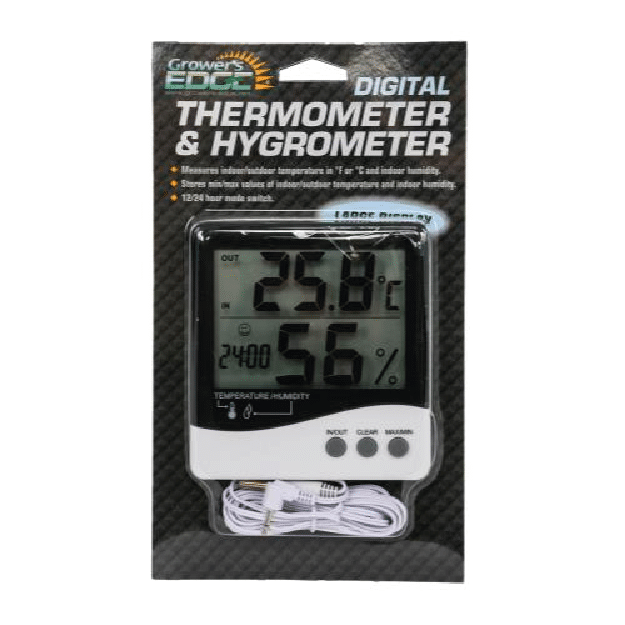
Thermometer/Hygrometer – Digital monitors to observe the day/night temperatures and humidity levels of your environment. Check out the Grower’s Edge® Digital Thermometer & Hygrometer.

Wall Mount Fans – Fans to circulate air in and around your growing space. Check out the Hurricane® Supreme Oscillating Wall Mount Fan.
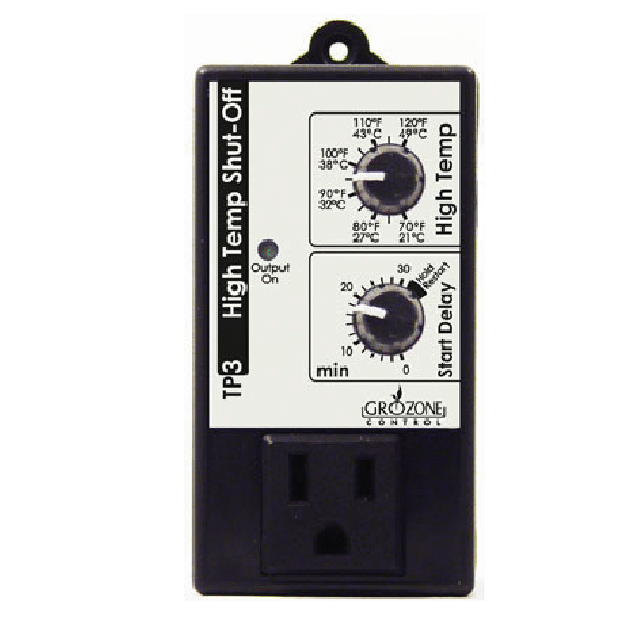
Cruise Temperature Thermostat – Thermostats that will turn your fan off or on based on the desired temperature of your space. Try the Grozone TP3 High Temp Shut-Off Thermostat.
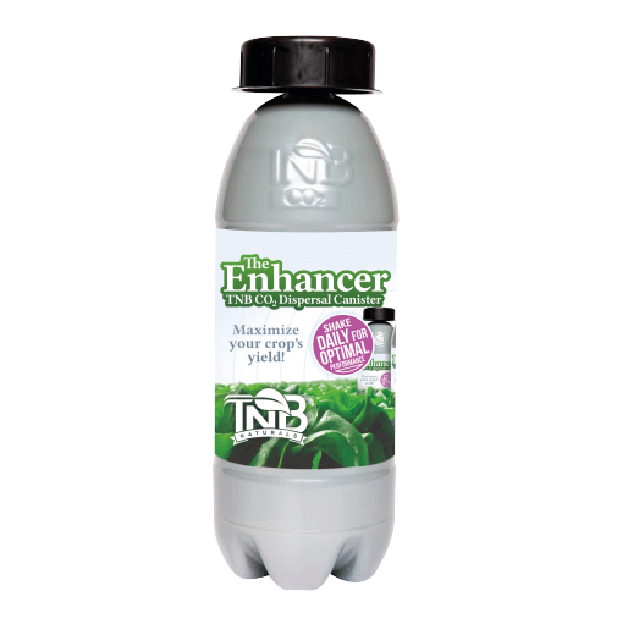
Co2 Injection or Supplemental Equipment – While costly, a Co2 injection system can drastically enhance yields and growing time. Growing on a smaller scale? Try a TNB Naturals The Enhancer CO2 Canister.
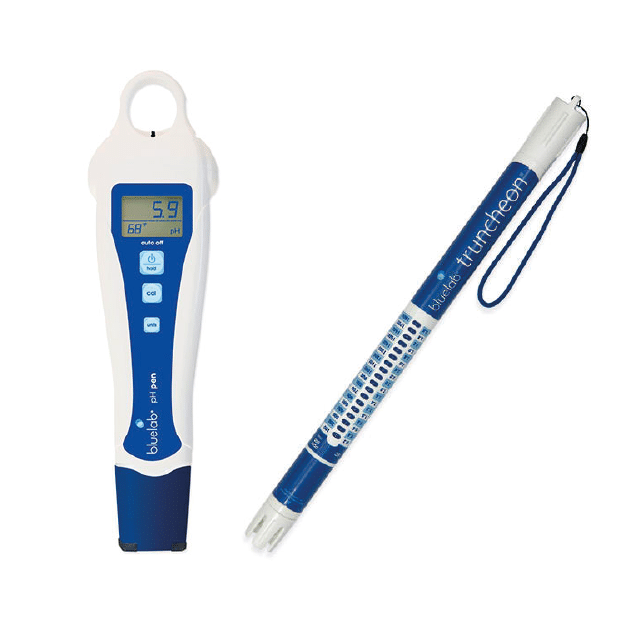
pH/PPM Control – Used to determine the pH level and strength of your nutrient solution. Try Bluelab® pH Pen for pH levels and the Bluelab® Truncheon® Nutrient Meter for PPMs.

Nutrient Requirements and Considerations
As your plants grow, they require more and more fertilizer to remain healthy. Here are some general tips on maximizing your plant’s nutrient uptake. First, make sure you’re using a nutrient system with a well-rounded N-P-K ratio. Second, measure and buffer the pH of your nutrient solution to maintain an acceptable range (the most common range for steady nutrient uptake is between 6.0 – 6.5).
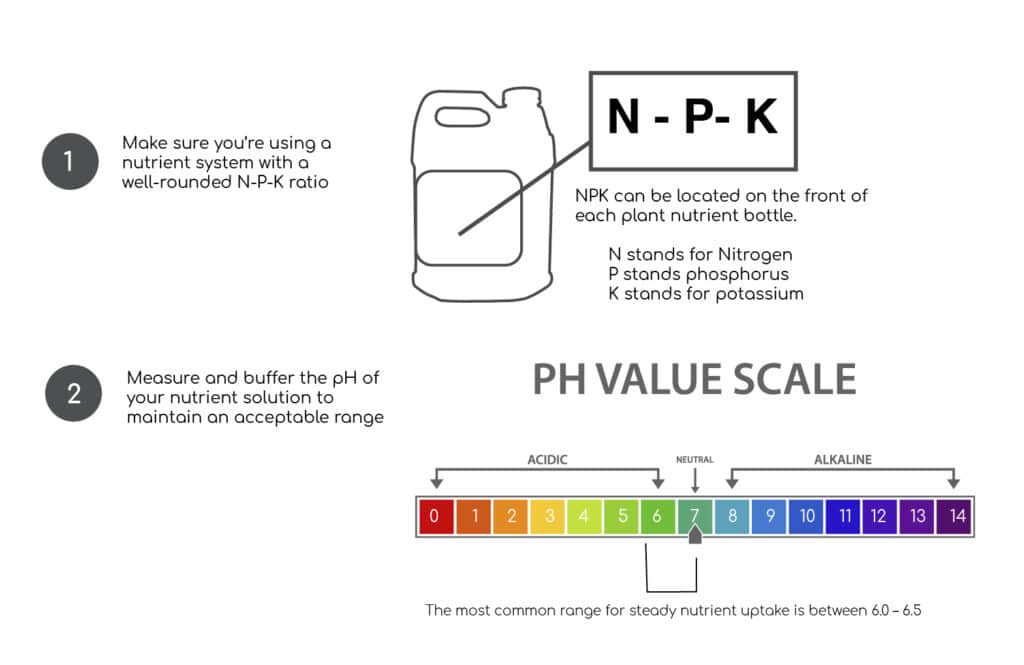
Lastly, utilize available testing equipment to measure the inputs of your garden. PPM is one among many ways of testing the content of your nutrient solution and can act as your “eyes” when it comes to mixing nutrients. Here are some “tiers of feeding” or general levels of nutrient strength that most plants will enjoy during the vegetative stage:
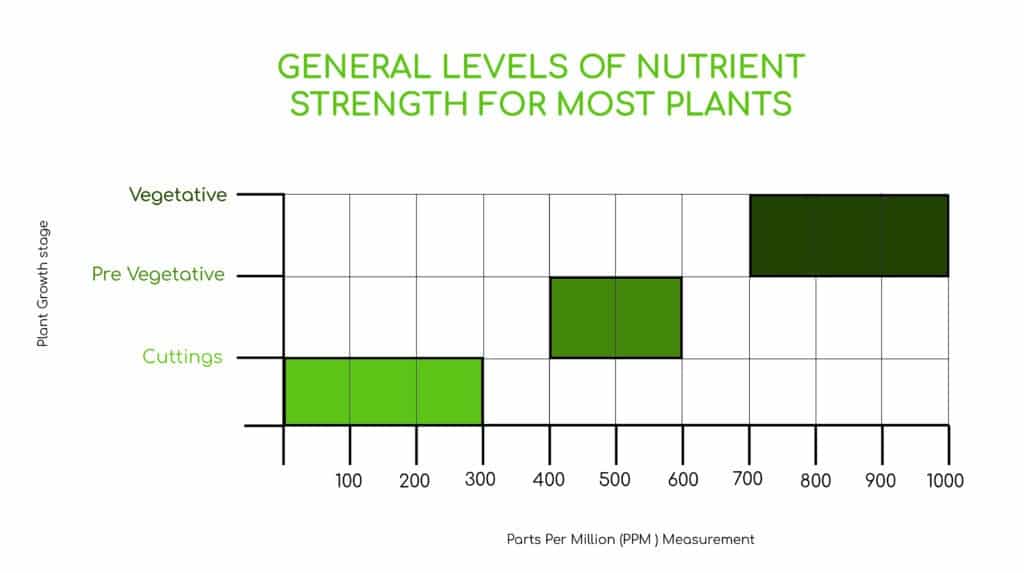
Looking for quality cannabis fertilizer? Click here to view the feeding programs available at GreenPlanet Nutrients.
Step #4: Take Notes, Monitor, and Inspect Your Crop
Since the vegetative period can last for weeks, it’s a good idea to develop a routine in the garden. Fertilize your crop regularly (add plant food with every other irrigation), take notes on the average day/night time temperatures of your garden, and inspect your crop for insect activity, slow growth, and/or nutrient deficiencies. Remember, your plant will continue to grow into the flowering stage. Most cannabis plants plant will double in size during the first two weeks of flower; so, imagine the final size of your crop and try not to outgrow your space!
Join us for more information about growing cannabis at home! For more tips on transplanting your cannabis seedlings into pots, contact our team at Grow Your Four.
Read More
- Tips on Curing Homegrown Cannabis
 After your cannabis is dried and processed, it’s time to think about curing, burping, and re-humidifying your crop to the perfect smoking and vaping consistency.
After your cannabis is dried and processed, it’s time to think about curing, burping, and re-humidifying your crop to the perfect smoking and vaping consistency. - How to Trim Cannabis to Perfection in 7 Easy Steps
 It’s true – trimming cannabis is one of the most monotonous jobs in the garden. But much the like process of knitting handmade fabrics, hand-trimming
It’s true – trimming cannabis is one of the most monotonous jobs in the garden. But much the like process of knitting handmade fabrics, hand-trimming - Grow Your Four’s Guide to Harvesting and Drying Cannabis
 By the end of week 8, your plants will likely be ready for harvest. Harvesting cannabis involves the important process of carefully drying plants to
By the end of week 8, your plants will likely be ready for harvest. Harvesting cannabis involves the important process of carefully drying plants to

